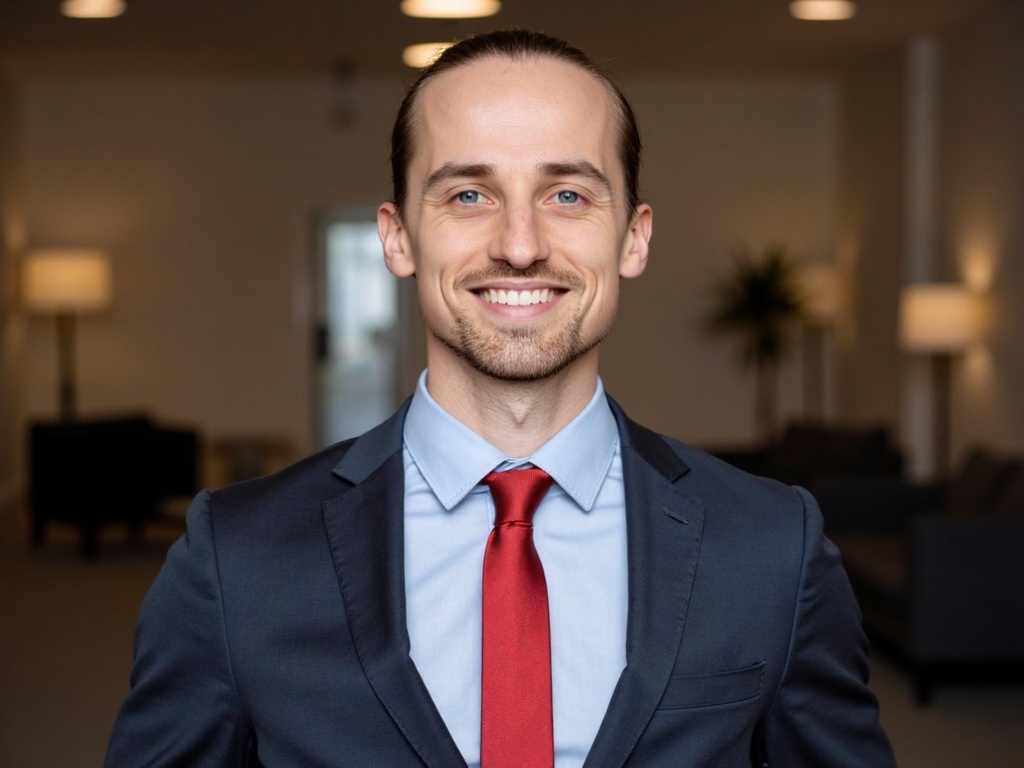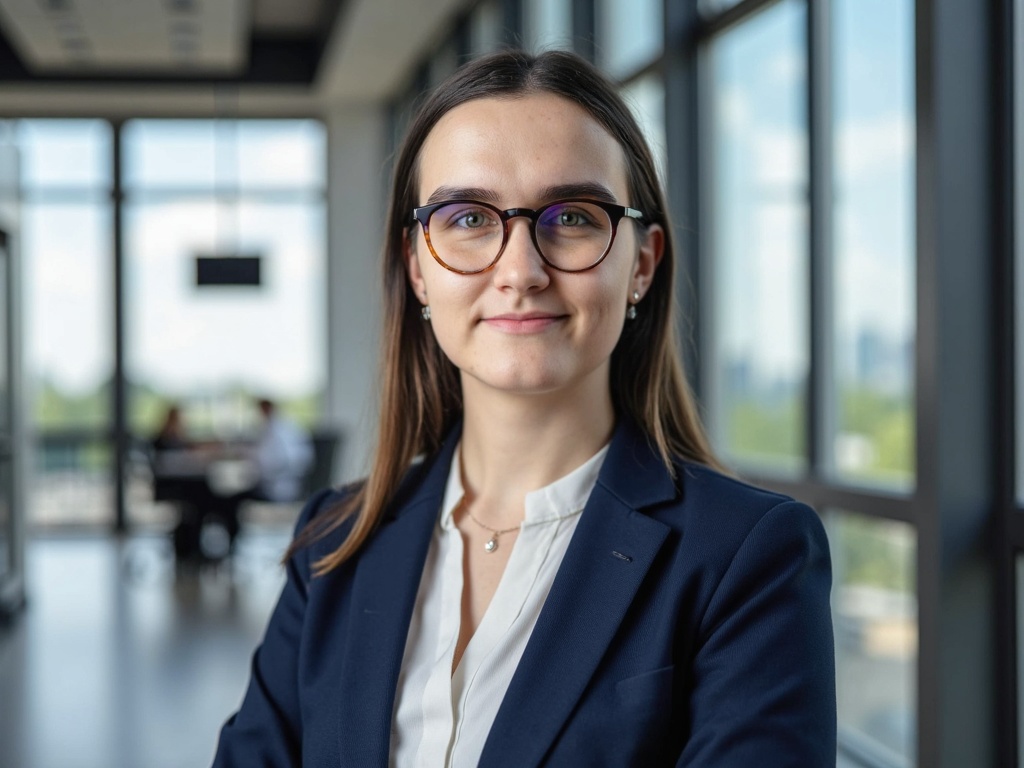Creating high-quality images with AI for professional headshots is now easier and more accessible than ever. With just a few photos and the right tool, you can generate polished, studio-style headshots in minutes, with no camera crew or lighting setup needed. This guide walks you through every step to get stunning, professional results using AI.
What This Guide Covers
-
Choose a reliable AI headshot generator
-
Gather and upload high-quality input photos
-
Choose your preferred style and background
-
Let the AI model train (if applicable)
-
Review, download, and refine your results
-
Use or retouch your final headshots as needed
Choose a Reliable AI Headshot Generator
Not all AI headshot tools are built the same. Some platforms perform basic face-swapping techniques that result in flat, inconsistent, or unrealistic images. Others, particularly those using advanced deep learning and model training, generate far more polished and realistic headshots with consistent facial features, professional styling, and clean backgrounds.
When choosing an AI headshot generator, look for the following key features:
Key Features to Consider
Image Realism: The platform should produce high-resolution, lifelike results that resemble real studio photography.
Customization Options: You should be able to choose from a wide range of outfits, backgrounds, and poses tailored to your industry or personal branding goals.
Privacy Protection: Ensure the platform does not sell, share, or store your data or photos without consent.
Speed and Flexibility: Some platforms generate images instantly, while others offer model training that may take 30 to 60 minutes but provide more tailored results.
Ownership Rights: Look for platforms that give you full usage rights for personal and commercial use.
For example, a platform like Headshotly.ai is built specifically for professionals and offers deep customization, advanced styling, and privacy-focused image generation. It’s an ideal solution for those seeking AI-generated LinkedIn headshots that look polished and industry-appropriate.
Gather and Upload High-Quality Input Photos
The quality of your AI-generated headshots is directly related to the quality of the photos you upload. The AI needs a diverse, clear dataset of your face to create accurate, sharp, and flattering headshots.
Best Practices for Uploading Photos
-
Upload 10–20 photos: More images give the AI more information to work with, improving facial consistency and accuracy.
-
Use varied angles: Include front-facing shots, slight side profiles, and different head tilts.
-
Ensure good lighting: Avoid dark, grainy, or overexposed images. Natural daylight or soft indoor lighting works best.
-
Show different expressions: Smiling and neutral expressions help the AI model build flexibility and a better understanding of your face.
-
Avoid filters and obstructions: Do not use photos with Snapchat filters, sunglasses, hats, or other face-covering accessories.
-
Use a mix of backgrounds: Neutral and busy backgrounds can help the model isolate your face more effectively.
Even casual selfies can work, provided they’re well-lit and clearly show your face. This step is critical, especially if you plan to generate style-specific outputs like corporate AI headshots or more creative visuals like fantasy headshots.
Choose Your Preferred Style and Background
After uploading your photos, most AI platforms will ask you to choose your preferred styling preferences. This customization step is where you define how your final headshots should look.

Style Options to Consider
Attire/Outfit: Choose between formal business attire, smart casual, or niche styles tailored to your profession, such as lawyer headshots or healthcare settings.
Backgrounds: Select from plain color backdrops, blurred environments, modern office scenes, or even custom-branded backgrounds.
Facial Expression and Pose: Some tools allow you to choose confident, approachable, or neutral expressions with upright or relaxed poses.
Gender and Age Sensitivity: If applicable, confirm that your selections align with your personal identity and presentation goals.
If the platform supports it, upload a reference image or describe your preferences using prompts like “business casual with a white background” or “corporate look with soft lighting.” This helps the AI fine-tune the results to match your exact expectations.
Let the AI Model Train (If Applicable)
Some advanced AI platforms, including those that offer more consistent and personalized outputs, will require time to train a model based on your uploads. This step typically takes between 20 and 60 minutes depending on the platform.
What Happens During Model Training
The AI analyzes your uploaded images, learns the structure of your face, and develops a personalized rendering model that can then generate multiple variations of headshots based on your chosen style and background.
Why Training Matters
-
Improves Facial Consistency: Keeps your features accurate across multiple images.
-
Enhances Personalization: Allows for better matching of attire, expressions, and tone.
-
Supports Style Replication: This enables the AI to mimic specific photo styles or lighting setups based on references.
While this may add to the turnaround time, it dramatically improves the realism and professionalism of your final headshots. Trained outputs are especially useful if you’re seeking cohesive executive AI headshots or consistent team photos.
Review, Download, and Refine Your Results
Once the generation process is complete, you’ll typically receive a gallery of 40 to 240+ AI-generated headshots. It’s important to take time to evaluate these outputs and select the ones that best represent your desired look.

What to Look for in Final Images
-
Facial Accuracy: Your face should look like you, not distorted, aged, or overly smoothed.
-
Hair and Outfit Quality: Check for sharp edges, consistent hairstyles, and appropriate clothing textures.
-
Lighting and Skin Tone: The image should feel natural, not artificial or overly retouched.
-
Background Realism: Look for smooth depth-of-field, no cutout artifacts, and visual consistency.
If the platform allows it, you can regenerate any image that doesn’t meet your standards or even enhance them using tools like an AI background remover or an AI image upscaler.
Use or Retouch Your Final Headshots as Needed
With your AI-generated headshots in hand, you can now put them to use across all your professional platforms. Whether you’re updating a LinkedIn profile, adding a headshot to your website, or refreshing your team page, AI headshots can give you a consistent and polished presence.
Where to Use AI Headshots
-
LinkedIn and other professional networking sites
-
Company websites and team directories
-
Speaking engagement bios and press kits
-
Business cards and marketing materials
-
Email signatures and Zoom or Slack profiles
If needed, tools like Canva, Photoshop, or Lightroom can help make minor adjustments. For easy branding, try using a professional email signature generator that includes your new headshot.
Optional Touch-Ups
Just make sure any edits preserve the natural, professional look you aimed for in the original AI-generated image.
Key Takeaways
Using AI for professional headshots is a fast, affordable, and highly effective way to get polished, studio-quality photos that reflect your brand. By following the steps outlined above, you can confidently produce headshots that are not only realistic but also tailored to your industry, style, and goals.
Here’s a recap of what we covered:
-
Choose a trustworthy AI headshot generator with advanced customization and privacy features
-
Upload 10 to 20 high-quality, diverse images of yourself for best results
-
Select your preferred style, background, and pose
-
Allow the platform time to train a model if needed
-
Carefully review and refine your headshot outputs
-
Use your headshots across all professional touchpoints
AI-generated headshots are transforming how individuals and teams present themselves online, saving time, money, and effort while delivering stunning results.
FAQs: How to Use AI for Professional Headshots
1. What is an AI headshot generator?
An AI headshot generator is a tool that uses artificial intelligence to create realistic, professional headshots from uploaded photos. It replaces traditional photography by simulating studio lighting, poses, and attire. These platforms analyze your facial structure and generate new images that match chosen styles, backgrounds, and professional settings.
2. Who should use AI for professional headshots?
Anyone who needs high-quality profile pictures can benefit from AI headshots, including job seekers, entrepreneurs, remote teams, coaches, and executives. Professionals looking for high-visibility imagery like influencer headshots also benefit from AI’s efficiency and styling range.
3. What kind of photos should I upload for AI headshots?
Upload 10 to 20 clear, well-lit images showing your face from different angles and expressions. Avoid filters, sunglasses, or distracting elements. Photos should reflect your everyday appearance and include front-facing and side-angle selfies with neutral backgrounds for optimal training and accurate output.
4. What styles can I choose for my AI headshots?
Most AI platforms offer options like business formal, smart casual, and industry-specific styles. You can also select backgrounds, lighting preferences, and even pose or facial expression types. Creative types may even try Ghibli-style headshots for a more animated or artistic look.
5. How long does it take to generate AI headshots?
The process can take anywhere from a few minutes to one hour depending on the platform. Instant generators are faster but may offer less accuracy, while model-based systems take longer for higher-quality results. Tools like an AI image-to-image generator use training-based personalization that may require more time.
6. What makes AI headshots different from regular photo editing?
AI headshots are created from scratch using machine learning, not just edited or filtered versions of your original photos. They simulate studio-quality lighting, attire, and settings. This allows you to get professional-grade results without a camera, photographer, or studio environment.
7. Can I use AI-generated headshots on LinkedIn and resumes?
Yes, AI headshots are perfect for LinkedIn, resumes, and other professional platforms. As long as the images are realistic and represent your true appearance, they’re appropriate and widely accepted. Make sure to choose a style that matches your industry and professional tone.
8. Are AI headshots safe and private?
It depends on the platform. Always choose an AI tool that guarantees photo privacy, data security, and full rights to your images. Engineers, for example, may prefer engineer headshots generated through GDPR-compliant tools for privacy-conscious industries.
9. How do I know if my AI headshot looks professional?
A professional AI headshot should have clear lighting, accurate facial features, realistic backgrounds, and a natural look. Your expression, clothing, and posture should feel polished but not overly artificial. If the image looks off, most tools offer regenerations or touch-up options.
10. What if I don’t like the results of my AI headshots?
Many platforms allow you to regenerate headshots or request improvements. Some even offer satisfaction guarantees or manual editing support. You can also use editing software to make small enhancements like adjusting brightness, cropping, or smoothing out minor artifacts.
11. How much do AI headshots cost?
Prices vary depending on the platform and features. Some tools offer free basic headshots with watermarks or limited styles, while premium platforms offer packages ranging from $20 to $80 for high-quality outputs and full usage rights. One-time payments or lifetime access are common.
12. Are AI headshots suitable for teams or companies?
Yes, many businesses now use AI headshots to standardize team profiles across websites, email signatures, and internal tools. For example, platforms offering support for team pages and visual cohesion are perfect for generating coach headshots or industry-wide consistency.
Ready to Get Started?
If you’re ready to create your own professional AI headshots, choose a trusted platform that offers high realism, secure data practices, and full control over your style. The process is simple, fast, and tailored to you, no studio is required. Don’t settle for average. Represent yourself at your best, anytime, anywhere with AI headshots that look and feel 100 percent professional. CNET’s comprehensive guide to getting new headshots using AI tools like Headshotly.ai
